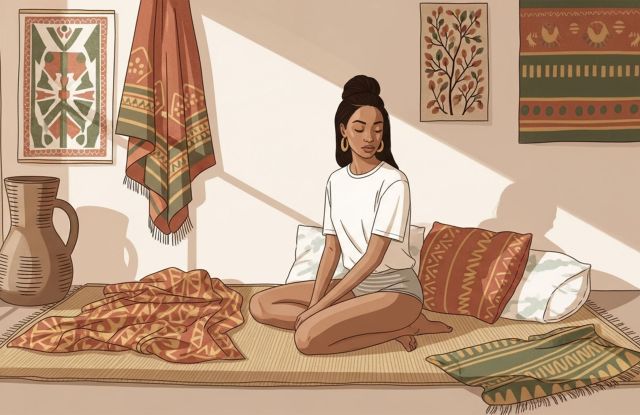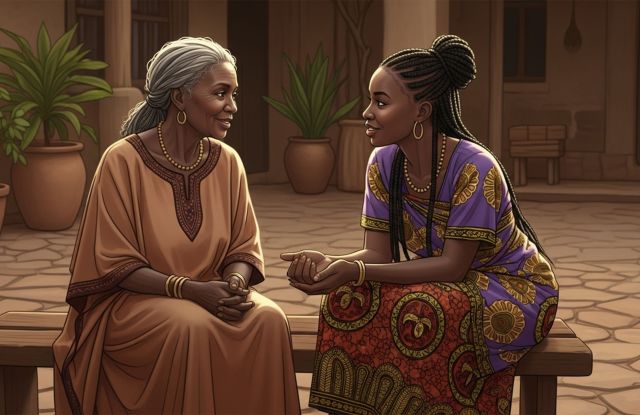
Labia Elongation in African Cultures: A Comparative Overview


In Brief
Labia elongation is a long-standing tradition in some African societies, taught between women during puberty or initiation. It carries meanings of maturity, identity and intimacy, and today it sits between cultural heritage and personal choice, with opinions differing by region, generation and individual experience.
Labia elongation is one of the least understood female body-modification traditions in the world—yet within several African societies, it has long been a normalized, meaningful part of growing up. While the practice often sparks strong reactions in Western discourse, inside the communities that maintain it, labia stretching carries layers of symbolism, practical reasoning, and social learning.
For men, understanding the practice can offer insight into how many African cultures approach intimacy, maturity, and womanhood. For women, it opens a window into how bodily traditions are shaped by family ties, mentorship, and cultural identity. Instead of treating the practice as a curiosity or controversy, this article puts it into context: where it emerged, how it is understood, and why it continues.
1. A Tradition Rooted in Mentorship and Female Solidarity
Across southern and eastern Africa, labia stretching is traditionally passed from older girls or aunts to younger girls during puberty. While the instruction is physical, the process carries social meaning. Teaching the technique often includes discussions about responsibility, relationships, and adulthood. In this sense, the practice is less about anatomy and more about preparing a girl for her future role in her community.
Rwanda & Burundi
Among some Rwandan and Burundian communities, labia elongation—gukuna or gukuna ibitsina—has been historically encouraged during adolescence. Older cousins or sisters introduce the technique, usually in private, framing it as a normal part of puberty. The emphasis tends to be practical: ensuring comfort during intimacy and preparing for married life.
Uganda
In Uganda, the practice varies significantly by ethnic group. Among the Baganda and some related groups, labia stretching has traditionally been woven into broader teachings on sexual conduct, communication, and partnership. The idea is not merely physical preparation but learning how intimacy and cooperation work within marriage.
Zambia & Zimbabwe
Within certain Zambian and Zimbabwean communities, particularly the Bemba and some Shona-speaking groups, the tradition is placed inside initiation ceremonies. Girls are taught how to stretch the labia gradually, often with plant-based lubricants or oils. Instruction may occur over several days during special gatherings led by older women known for cultural knowledge.
Quick Start: How to Approach This Topic
- Remember context: Labia elongation is one tradition among many, not a rule for all African women.
- Ask, don’t assume: A woman’s background does not automatically tell you how she feels about the practice.
- Focus on choice: What matters today is whether women feel free to decide for themselves.
- Avoid stereotypes: Treat this tradition as part of a specific cultural story, not as a label for a whole continent.
2. Cultural Reasons: More Than Just a Body Practice
Cultural Insight
In many communities, labia elongation is not treated as a separate “procedure” but as one part of teaching a girl how to navigate adult life. The same sessions might include advice about relationships, communication, household roles and how to carry oneself in public.
The practice is part of a wider package of knowledge, which helps explain why it remains meaningful even as lifestyles and expectations change.
While the specifics differ, several themes appear again and again across regions.
A. Readiness for Marriage and Adulthood
In many cultures, elongated labia once signified a girl had reached the threshold of maturity. It showed she had received mentorship and understood her community’s expectations for adult relationships.
B. Sexual Compatibility and Comfort
Certain communities associate longer labia with enhanced comfort during intimacy or improved compatibility with a partner. These beliefs are cultural rather than medical, but they recur widely across regions.
C. A Symbol of Togetherness Among Women
Because the practice is shared between older and younger generations, it becomes a channel for passing down wisdom. Lessons about relationships, health, responsibility, and private matters often happened during these sessions, making the practice less about anatomy and more about connection.
D. A Marker of Cultural Identity
For some ethnic groups, labia elongation is a recognizable sign of heritage—similar to language, hairstyles, or traditional dress. It carries a sense of belonging.
3. Not One Africa, and Not One Tradition
It is important to understand Africa not as a single cultural entity but as a vast continent with thousands of ethnic groups. Even within the same country, attitudes toward labia stretching can be completely different.
| Region / Country | Example Groups | Cultural Emphasis | Current Trend |
|---|---|---|---|
| Rwanda & Burundi | Various Rwandan & Burundian groups | Puberty, readiness for marriage, private mentorship | Still present, more individual choice in cities |
| Uganda | Some Baganda and related groups | Intimacy skills, communication, partnership | Mixed views; some see it as heritage, others as optional |
| Zambia & Zimbabwe | Bemba, some Shona-speaking groups | Initiation ceremonies, intergenerational teaching | Changing with schooling, religion and urban life |
| Other regions | Many West & North African societies | No tradition of labia elongation | Practice is unknown or considered foreign |
Did You Know?
- In some families, girls hear about labia elongation from cousins or friends rather than from parents.
- In many cities, women first learn about the tradition through social media, not through initiation ceremonies.
- Men’s views range from strong appreciation to indifference, with many simply seeing it as a private matter.
Where It Is Practiced
-
Rwanda
-
Burundi
-
Uganda
-
Zambia
-
Zimbabwe
-
Parts of Malawi
-
Minority groups in Mozambique and South Africa
Where It Is Not
Many regions—West Africa, North Africa, the Horn of Africa—have no history of the practice. Even within practicing regions, participation varies by family, urban vs. rural background, and religious influences.
Some younger African women adopt the practice by choice. Others do not. Some families value the tradition. Others consider it outdated. Men’s perspectives also vary. The practice is neither universal nor monolithic.
4. The Encounter With Modernity
The 21st century has changed how communities interact with the practice.
Urbanization
In cities, young women may learn about labia stretching through friends rather than family. Some may seek instruction online or decide individually whether to try it.
Education and Global Influence
Exposure to global conversations about body autonomy has prompted more questioning. Some women maintain the practice as a form of heritage; others distance themselves from it.
Shifting Gender Roles
Modern relationships often emphasize companionship and mutual decision-making. For some couples, the practice becomes a shared topic of curiosity or discussion.
Health Conversations
Wellness conversations—often led by African women themselves—have reframed the practice as a personal choice. They emphasize hygiene, technique, and safety while moving away from social pressure.

5. Men’s Perspectives: Tradition, Curiosity, and Communication
Although labia stretching is a women-taught practice, men’s attitudes influence whether traditions continue. Across cultures, these attitudes tend to fall into three categories:
Traditional Appreciation
In some regions, men associate elongated labia with maturity or compatibility. They may value it because of cultural identity or inherited beliefs.
Neutral Curiosity
Many modern African men view the practice with curiosity but without strong expectations. They recognize it as a personal choice between partners.
Indifference or Modern Rejection
Some men view the tradition as outdated and do not consider it significant for relationships.
What matters most today is communication rather than cultural obligation. In many relationships—African or not—the topic only arises if a woman brings it up.
“Instead of disappearing, labia elongation has shifted from a community expectation to a private decision, shaped by schooling, migration, religion and online conversations.”
6. Attitudes Among Women: Between Heritage and Individual Choice
Women’s opinions vary widely:
-
Some consider it an important part of cultural identity.
-
Others recognize the heritage but choose not to continue the tradition.
-
Some adopt it later in life for personal reasons unrelated to culture.
-
Others prefer not to modify their anatomy at all.
This spectrum is normal, and it mirrors broader shifts happening across many societies where traditions meet modern individual decision-making.
7. A Comparative Lens: What the Practice Reveals
Using labia elongation as a case study, several broader cultural observations emerge.
A. Intimacy as a Learned Skill
African traditions tend to frame intimacy as a skill taught by elders—not something left entirely to chance. Labia stretching fits into this larger worldview.
B. Rites of Passage Matter
Many societies value structured transitions from childhood to adulthood. These rites are not merely ceremonies—they are educational frameworks.
C. Women as Cultural Educators
In regions where the practice persists, women carry cultural authority. They teach, guide, and maintain continuity.
D. Modernity Doesn’t Erase Tradition—It Reshapes It
Instead of disappearing, labia elongation has adapted. It has moved from communal initiation to private choice, from family instruction to online research, from cultural expectation to optional exploration.
8. Contemporary Relevance for Global Readers
For readers outside Africa—both men and women—understanding labia elongation requires context rather than assumptions.
-
It is not a harmful procedure when practiced gently and consensually.
-
It is not universally required or expected even in practicing cultures.
-
It has social meanings that cannot be understood without acknowledging its roots.
-
Today, it occupies a middle ground between heritage and personal exploration.
Men reading about the practice often find that understanding its cultural roots improves their grasp of how differently societies treat intimacy, mentorship, and body knowledge. Women reading about it may see it as either a meaningful historical tradition or a personal practice worth considering—or not considering—on its own terms.
Labia Elongation at a Glance
Who Teaches
- Older sisters, cousins, aunts
- Initiation instructors
- Trusted friends in cities
Common Meanings
- Maturity and readiness
- Cultural belonging
- Intimacy and comfort
Today
- More individual choice
- Urban–rural differences
- Ongoing conversations online
Questions Men and Women Often Ask
Is labia elongation common everywhere in Africa?
No. The tradition appears in specific regions and among particular ethnic groups in countries such as Rwanda, Burundi, Uganda, Zambia and Zimbabwe. Many other African societies have no history of the practice at all.
Is labia elongation considered harmful?
When done gently, gradually and without force, labia elongation is generally viewed as a non-surgical body practice. Concerns arise when there is pressure, shame or a lack of informed choice, which is why context and consent matter.
How do modern African women feel about this tradition?
Opinions vary. Some see it as meaningful heritage, others view it as optional or outdated. Many women choose based on their own comfort, values and relationship dynamics rather than on automatic expectations.
Why should men learn about labia elongation?
For men in or outside Africa, understanding this tradition can improve communication, reduce misunderstanding and deepen respect for what some women may have learned or questioned as part of growing up.
A Tradition With Layers, Not Labels
Labia elongation in African cultures is best understood not through shock or judgment but through context. It is a practice shaped by mentorship, identity, and generational knowledge. For some women today, it remains a link to heritage. For others, it is a private choice or something they do not engage in at all.
Cultures evolve. Traditions shift. Yet the meaning behind labia stretching—connection, teaching, readiness, identity—continues to hold significance in many communities. Understanding those layers allows men and women from any background to approach the topic with clarity rather than confusion.







